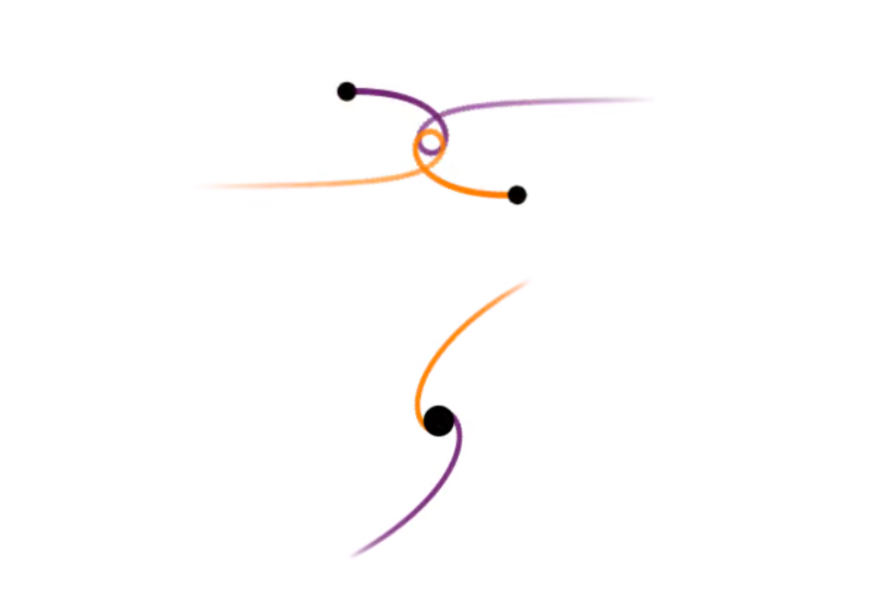Uncovering the final steps of black holes’ swing dance

Black holes are attractive objects, often preferring to live in couples. When left alone, these couples (known as “binaries”) pierce through the remainder of their long lives obeying a reassuring routine: they dance around within ever-shrinking circles, in a cosmically-long and symmetric waltz, until they crash into each other in an eternal hug, giving rise to a single “child” black hole. A rebellious minority lives instead more chaotic and interesting lives: they exist surrounded by many other fellow black holes, feeling their mutual attraction and flying across trajectories that break circularity, undergoing a frenetic swing dance. Albeit the initial steps of this complex dance have previously been predicted, the powerful final moves regulating this swing have not.
In a recent study by Strong member Gregorio Carullo and Strong visitor Simone Albanesi, just published by Physical Review Letters, theoretical intuition and state-of-the-art numerical solutions of Einstein’s gravitational equations were used create for the first time a description of these final stages. They found simple ways to describe both the properties of the “child” born after the crash, and of the violent gravity wave emission accompanying its formation. Within this description, they uncovered an unexpected emerging structure, indicating an unforeseen simplicity engraved in the dynamic of these systems. Such description will be instrumental in helping scientists worldwide to find more of such rebellious systems, learn their characteristics, but most importantly to tackle a massive unsolved problem in astrophysics: understanding the properties of the environments these couples dance within, being it in crowded galaxies' centres or within gigantic conglomeration of stars.
The paper is available at: https://journals.aps.org/prl/abstract/10.1103/PhysRevLett.132.101401
Picture credits: Jacopo Tissino
March 6, 2024, 9 a.m.